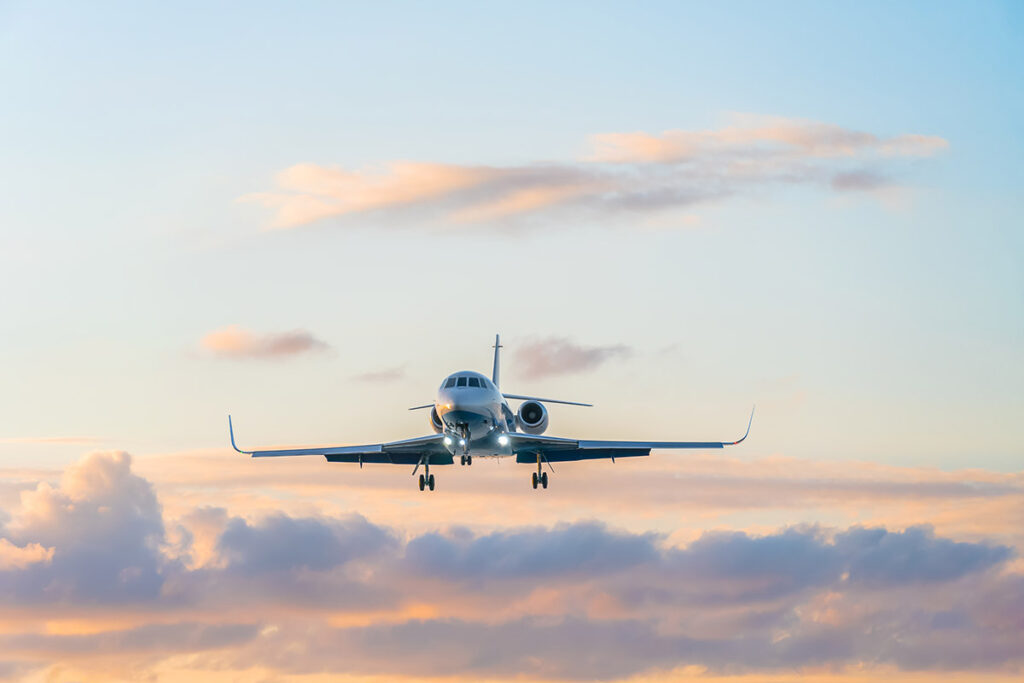How Fast Do Private Jets Fly?
When time is of the essence, no traveler is willing to wait in never-ending security lines at the airport or, worse, wind up delayed due to uncontrollable snags in the day’s flight schedule.
Fortunately, private jets enable passengers to board and deplane significantly faster than commercial transportation options, with even more control over departure times and destinations.
Yet, private jets offer travelers another inherent benefit beyond enhanced convenience and expedited take-off — they simply fly faster. While many commercial airlines maintain cruising speeds below 500 miles per hour, private jets can reach cruising speeds between 20 and 100 miles per hour faster.
So, how fast do private jets fly? If you’re looking to accelerate long-range travel, the following commercial private jets can get you from city to city or country to country in a fraction of the time.
The Fastest Commercial Private Jets (for now): The Cessna Citation X+
Boasting unparalleled velocity, 2018’s Citation X+ propels its passengers to their destinations with remarkable rapidity, making it the epitome of swiftness and efficiency in air travel. With a maximum cruising speed of Mach 0.925 or 606 miles per hour, this nearly supersonic jet has broken four-speed records, beaten its competitors, and offered travelers the option for fast arrivals.
Coming Soon (2025): The Bombardier Global 8000
The Bombardier Global 8000 is scheduled for release in 2025 and is expected to show astonishing speeds. With an estimated Mach 0.94 top speed, the Global 8000 can break records and establish itself as the fastest private business jet.
Understanding Private Jet Speed: Factors to Consider
Understanding private jet speed requires considering various factors influencing the velocity at which these elite aircraft traverse the skies. These factors include aircraft model, maximum flight altitude, and engine type.
A crucial factor is the specific model of the aircraft itself, with each having different designs and engine capabilities that can impact performance.
The operational altitude of each jet plays a significant role in determining its speed. Jets typically fly faster at higher altitudes and thinner air. Operational altitude reduces drag and allows the aircraft to achieve higher speeds with less resistance.
Additionally, advanced engine technologies enable jets to achieve higher thrust and propel the aircraft at swifter velocities. As such, the choice of engine type is a critical consideration for manufacturers and operators seeking to optimize speed and performance.
Light Jets: Agility and Speed
For travelers interested in quick and easy, private jets like the Beechcraft 400A and Hawker 400XP are known for their mix of responsiveness and speed. Both jet models have comfortable designs, seating for seven, 53 cubic feet of baggage space, speeds ranging from 476-518 mph, and an overall flight duration of 2.9-3.9 hours.
[go_pricing id=”light”]Mid-Size Jets: Balancing Comfort and Velocity
Midsize jets like the Citation Excel and Lear 60XR redefine air travel and epitomize speed and comfort. The Citation seats eight, with a massive 90 cubic feet of baggage space, speeds ranging from 422-487 mph, and an overall flight duration of 3.8-4.5 hours. In contrast, the 60XR seats seven, with 48 cubic feet of baggage space, speeds ranging from 486-521 mph, and an overall flight duration of 3.8-4.6 hours.
[go_pricing id=”mid-size”]
Super Mid-Size Jets: The Perfect Harmony of Speed and Space
Super Mid-Size Jets, like the Citation Sovereign and Gulfstream 200, are known for their outstanding speed and large cabin layouts. The Sovereign seats nine, with 135 cubic feet of baggage space, a maximum speed of 528 mph, and an overall flight duration of 5.5+ hours. Similarly, the 200 seats nine, with a larger 150 cubic feet of baggage space, speeds ranging from 495-541 mph, and an overall flight duration of 4.5-5.0 hours.
[go_pricing id=”super”]
Heavy Jets: Ultimate Luxury at High Speeds
Heavy Jets like the Gulfstream IV + G450 represent extreme luxury, relaxation, and air travel speed perfect for international trips. The Gulfstream seats 16, with 169 cubic feet of baggage space, a maximum speed of 527 mph, and an overall flight duration of 10+ hours, perfect for travel across continents.
[go_pricing id=”heavy”]

Commercial Airlines vs Private Jets: Which is Faster?
While a typical commercial airliner can reach cruising speeds between 460 and 570 mph, private jets are often faster. Higher altitudes let private jets achieve increased speeds with less energy, translating to shorter travel times for passengers.
Private jet operations are streamlined beyond just flight speed, allowing for reduced time on check-in procedures, boarding, and disembarking. Private jets can also travel more direct routes to their destinations and bypass busy airspaces and potential commercial layovers.
The combination of faster cruising speeds, reduced ground time, and direct routing positions private jets as a superior choice for travelers seeking the ultimate in speed and convenience. For more information, visit our private jet rental guide.
Choosing the Right Private Aircraft for Your Needs
When time equals money, the right private aircraft can guarantee effective cross-country and cross-continent travel in a fraction of the time, with more practical boarding and disembarking procedures plus even more privacy for those who value peace and quiet.
However, each aircraft boasts varying engine capabilities and maximum flight altitudes, influencing the ultimate travel speed. Likewise, specific models — like light jets — are ideal for quick trips, whereas heavy jets are better equipped for long-distance flights.
Whether you’re looking to travel a few short hours or embark on an international journey, Jets.com has the right private aircraft for your needs.
Compare our fleet of jets today to discover the right aircraft to accommodate your time-sensitive travel plans, or contact us for help selecting a private jet that can grant you the comfort and luxury you deserve while soaring to your next travel destination.





